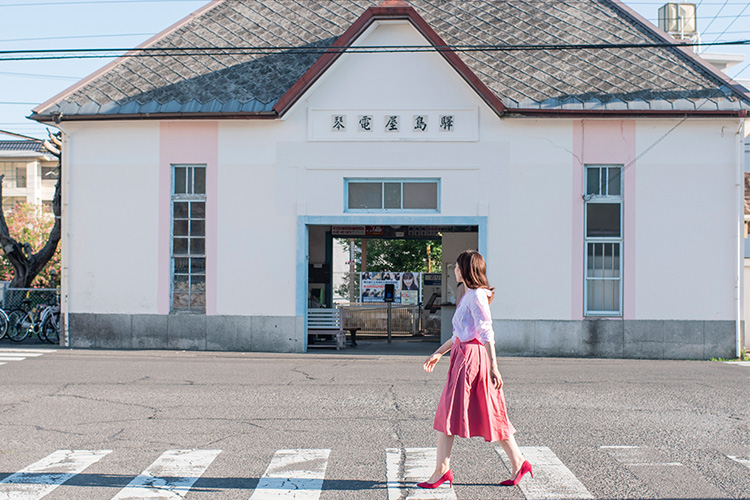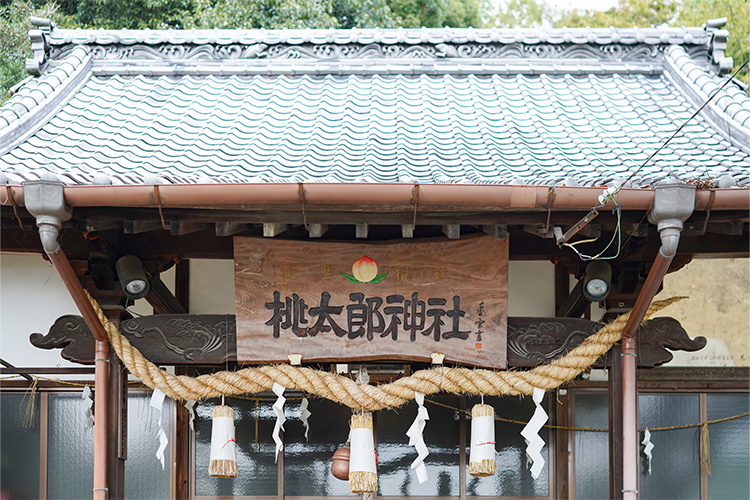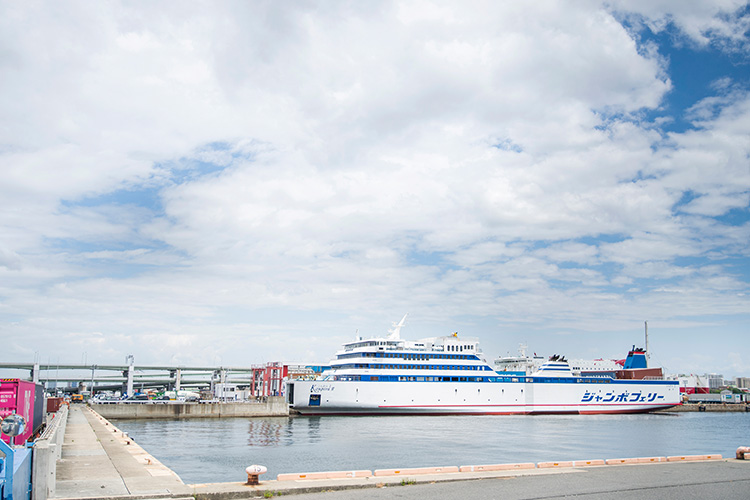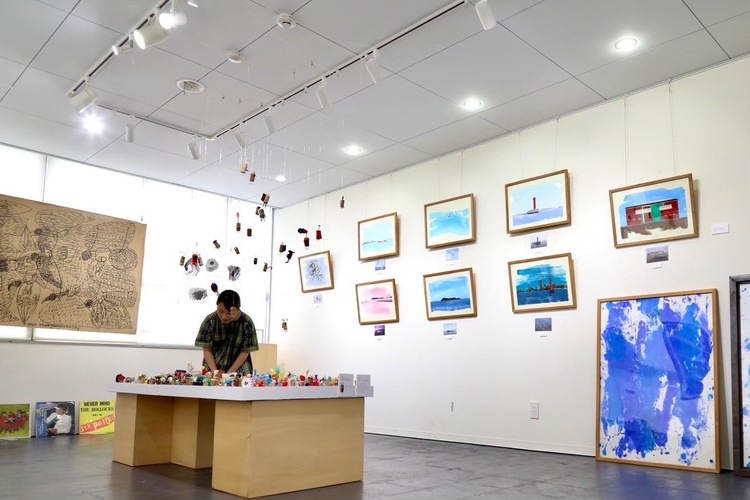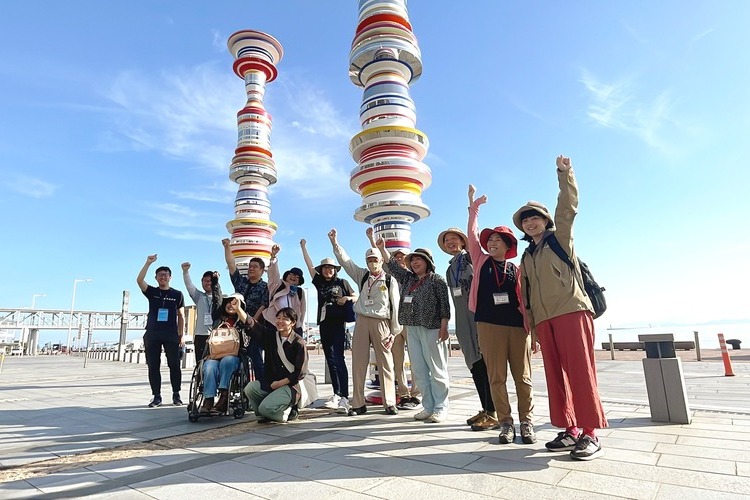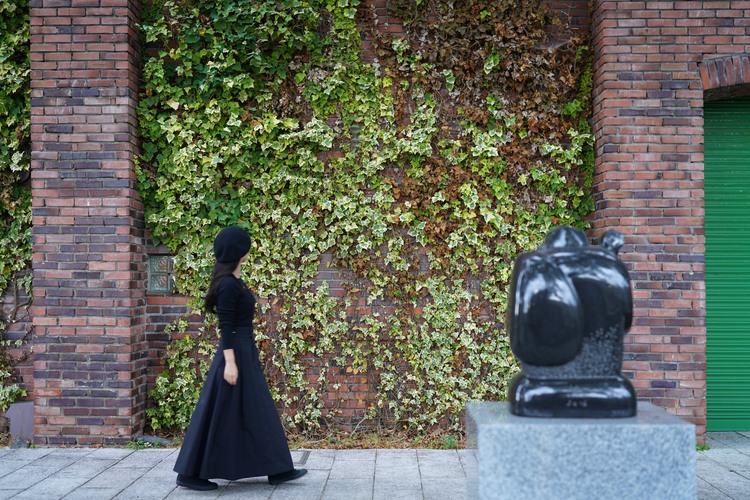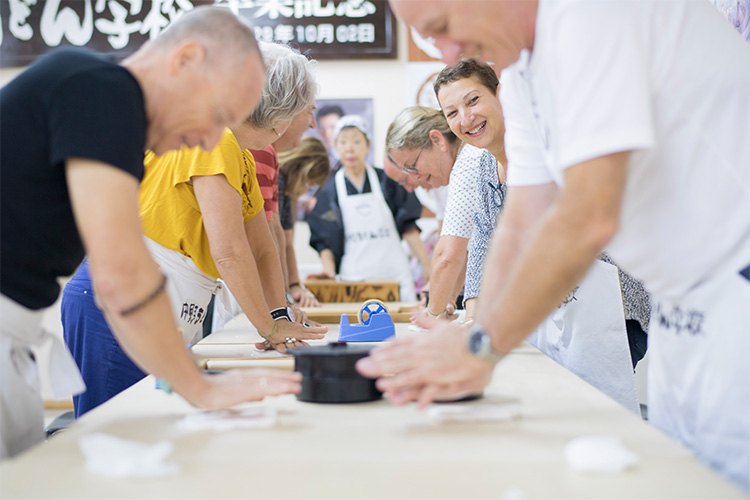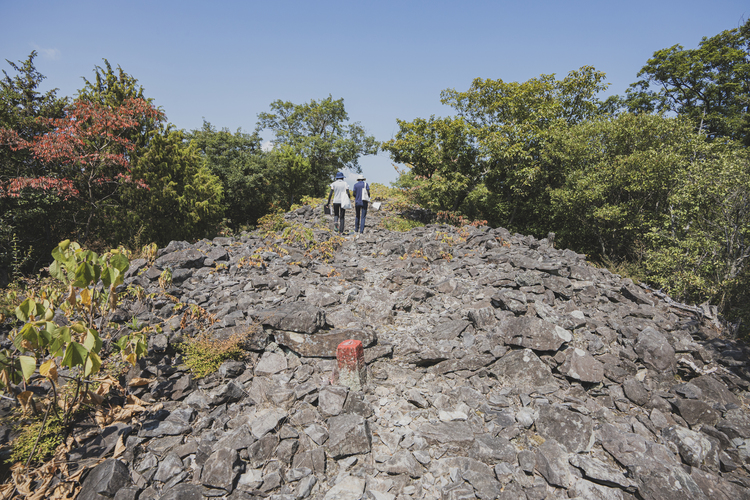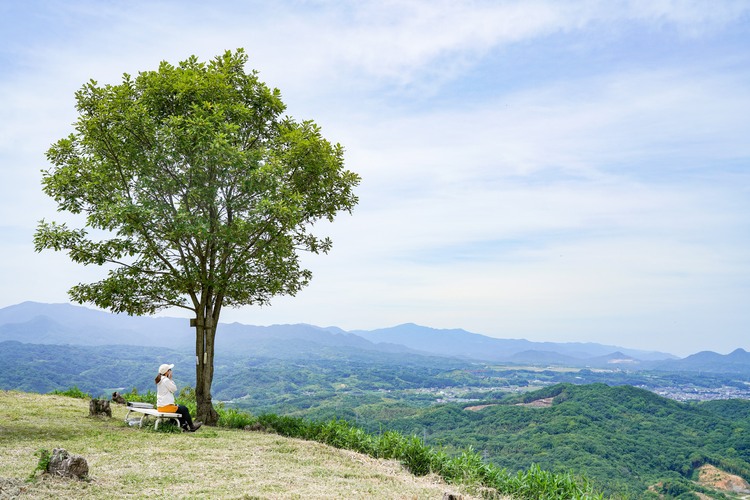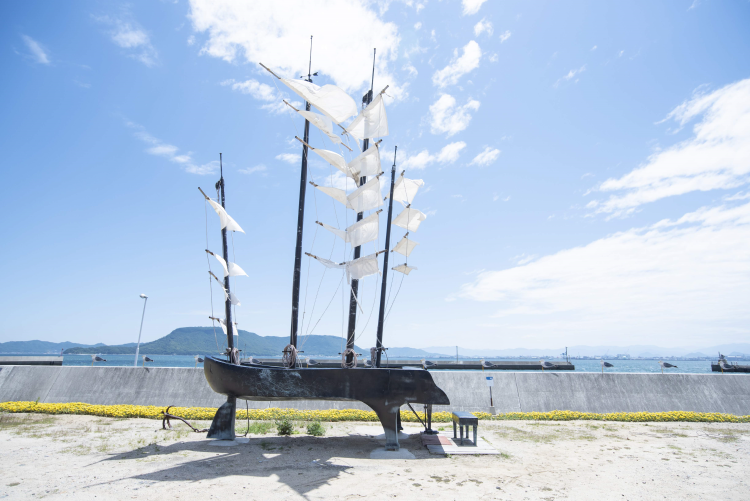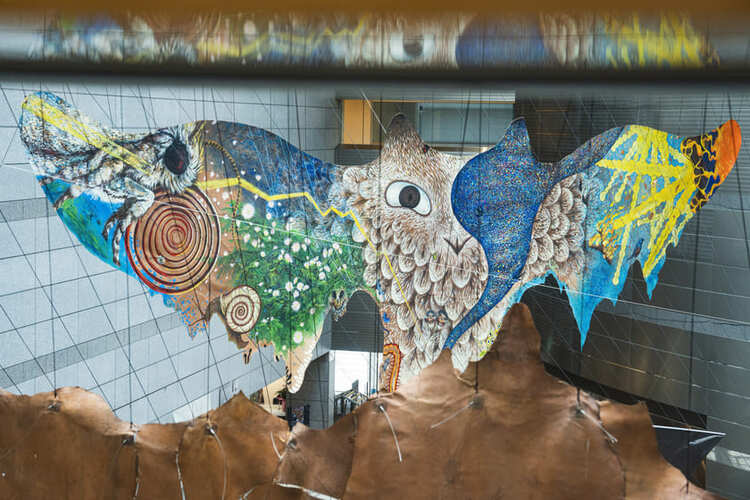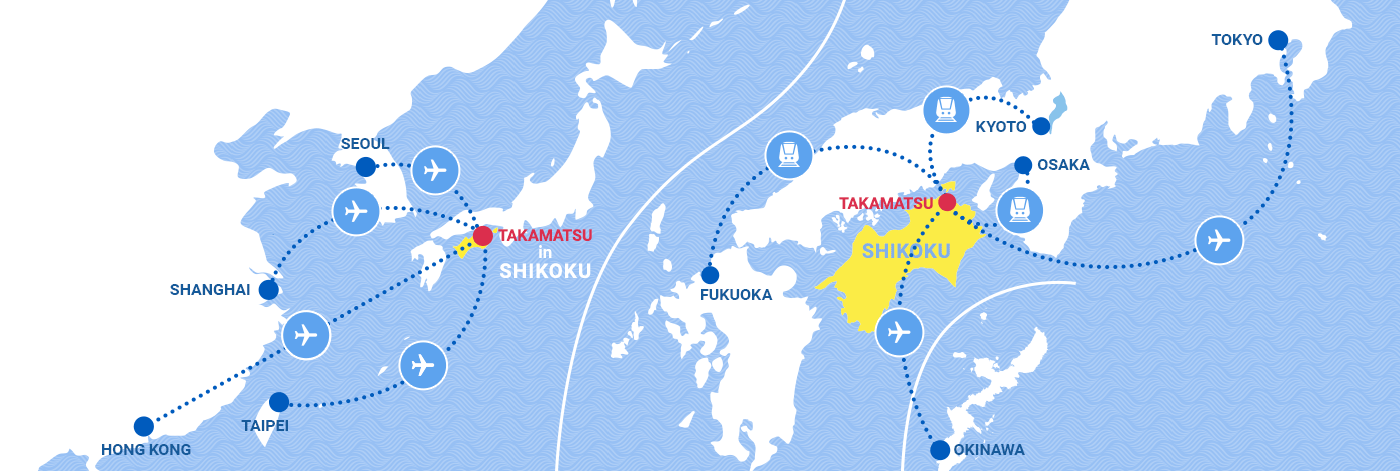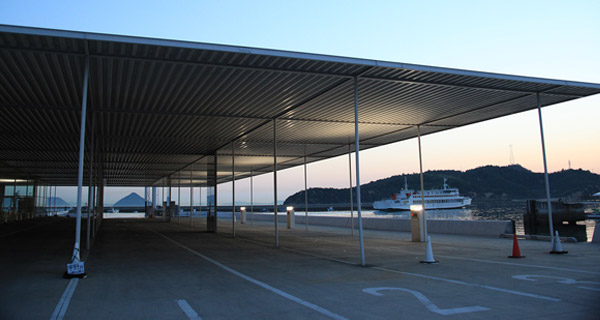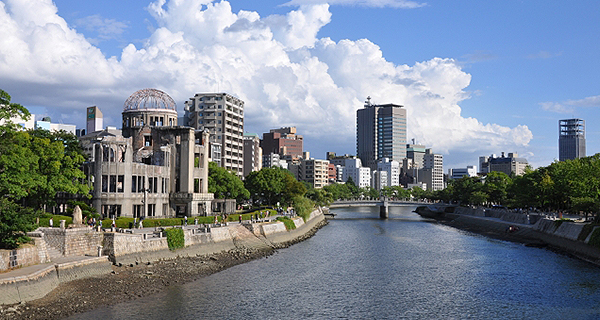
Momotaro is a familiar Japanese story about a boy born from a peach and his three companions: a dog, a monkey and a pheasant, who set out on a journey to defeat the ogres.

Many places have been associated with this famous legend, and Takamatsu is one of them. Inspired by the words of Prime Minister Shigenobu Okuma, local elementary school teacher Sentaro Hashimoto decided to explore the origin of the Momotaro legend in Takamatsu.
Kinashi, a place with no ogres?

In 1914, the train Shigenobu Okuma was on, who was on the way to Kotohira, stopped at the Kinashi Station.
The Sanuki Tetsudo (present-day JR Shikoku) connecting Takamatsu and Marugame began operating in the late Meiji Period, and people looked forward to seeing new businesses grow along the railroad line.

During his speech, Okuma mentioned the interesting name of the station, which reads Kinashi instead of Oninashi.
It was his words that prompted Mr. Hashimoto to study the local history.
According to Mr. Hashimoto, the Momotaro folktale that has been passed down orally by the people of Kinashi is based on a tale about conquering pirates that Sugawara no Michizane heard from local fishermen and wrote down after being transferred to Sanuki in 886.
Mr. Hashimoto examined the relationship between the narrative and actual place names and geographical features, and published the article, The birthplace of the folktale Momotaro is Kinashi in Sanuki, in Shikoku Minpo (present-day The Shikoku Shimbun) in 1930, declaring Takamatsu to be the birthplace of Momotaro.

In his interpretation, the inspiration for Momotaro is prince Wakatake no Hiko no Mikoto believed to be the son of Emperor Korei, the seventh legendary emperor of Japan, born circa B.C. 200. And the ogres were pirates based in Megijima. When Wakatake no Hiko no Mikoto visited Sanuki, the local people told him about the wrongdoing of pirates in the area. He then decided to set out on a journey to conquer them with brave warriors from Kashigatani (Kinashicho, Takamatsu, Kagawa), Saruo (Town of Ayagawa, Kagawa) and Inujima (Okayama-shi, Okayama Prefecture).
Explore the landscape of the Momotaro legend

Mr. Yoshikuni Kitadani of the Kinashi Tourism Association and Mr. Toshio Hanazawa of the Kinashi Municipal Corporation showed us places associated with Momotaro.
Momotaro Shrine




Kumano Gongen where Wakatake no Hiko no Mikoto is enshrined is one of six shrines in Japan permitted to call itself Momotaro Shrine.



Inside of its haiden, a hall of worship that is opened to the public only during festivals, small wooden plaques and kites are displayed.


There is a tomb of Momotaro alongside the tombs of the dog, monkey and pheasant in the corner of the shrine's grounds.

The old man and woman are honored as matchmaker deities.

.jpg)
Momotaro Shrine is a place where local children gather to celebrate milestones in their lives. When the annual Momotaro Festival is held in March, the shrine is crowded with children who want to participate in the sumo tournament and long jump rope competition.
The hall of worship is open to the public during the following periods:
| New Year Festival | January 1, 2, 3 |
|---|---|
| Omikanyaki (New Year bonfire) | Middle of January |
| Kinashi Momotaro Festival | Last Sunday in March |
| Spring Festival | April 7 and 8 |
| Autumn Festival | The 2rd Saturday and Sunday in October |
Onigazuka
The ogres surrendered in Megijima but travelled to Kinashi to get their revenge. Momotaro killed and buried them in the hill. This location is named Onigazuka.

Mr. Hanazawa said, "Children used to be scared of this place a little because there were no houses nearby."



The place, however, turns pink in the spring as the cherry blossoms bloom.
Ofuruya
.jpg)
Ofuruya was the home of the old man and woman.

This private house once had a picture-perfect thatched roof.
*Entry is prohibited to protect the privacy of the owner.
Honzugawa

This is the river where the old woman washed clothing.

She met Wakatake no Hiko no Mikoto who was rowing his boat.
Shibayama
This is the mountain where the old man gathered firewood to use at home.

The area was once covered with peach trees.
Statues of Momotaro Dentetsu characters made of Aji-stone

Statues of Momotaro Dentetsu characters stand the Kinashi Station. Momotaro Dentetsu is a popular video game developed by Hudson, currently known as Konami Digital Entertainment.



A folding screen from the Edo Period that portrays scenes from Momotaro (private collection).
Onigashima Cavern in Megijima is where the ogres are said to have lived


Megijima is approximately 4 km off the coast of the Port of Takamatsu. Onigashima Cavern is at an elevation of 188 meters above sea level, at the foot of Mt. Washigamine.

Mr. Hashimoto discovered the cavern in Megijima in 1914 and became convinced that this was where the ogres lived. The article about the Momotaro legend published in Shikoku Minpo captured people's attention. When Onigashima Cavern was opened to the public in 1931, Megijima became popularly known as the place where the ogres lived.

At the time of its discovery, the cavern was completely covered with weeds and was not easily identified. The entrance is small but the cavern is actually 400 meter deep and there are many passageways within it.

On the rocks, there are marks left by the intentional use of chisels, which suggests the place was an old quarry. Some also say this was where pirates lived.

There is now a re-creation of a great hall and waiting room for guards to depict what it would have looked like when used by the conquering ogres.


You can encounter different ogres on the island.
Onigashima Cavern
https://www.art-takamatsu.com/jp/spot/entry-653.htmlSpecial thanks
Mr. Shigeo Imaoka of the Takamatsu Cultural Property Preservation Association
Mr. Yoshikuni Kitadani of the Kinashi Tourism Association
Mr. Toshio Hanazawa of the Kinashi Municipal Corporation
Momotaro Shrine
- Address
- 848 Kinashi, Kinashicho, Takamatsu, Kagawa
Onigashima Cavern
- Address
- 235 Megicho, Takamatsu, Kagawa
- Business hours
- 8:30-17:00 The entrance closes at 16:30
- Regular holidays
- Open all year.
Gathering date:2023.12.14






